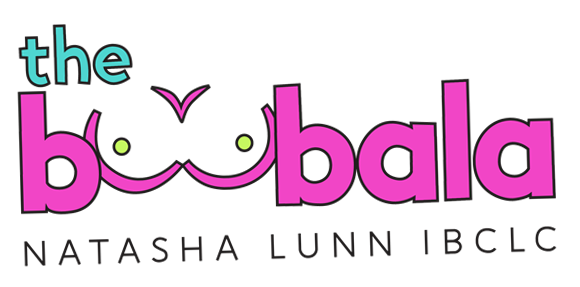Page Content
- Will Zyrtec dry up breast milk?
- What to take for allergies while breastfeeding?
- Should I take Claritin or zyrtec while breastfeeding?
- Which works better, Claritin or Zyrtec?
- Can I take Texa allergy while breastfeeding?
- Will Claritin dry up milk supply?
- What can I take for allergies while breastfeeding?
- What is the best allergy medicine for nursing mom?
- What does baby poop look like with a milk allergy?
- What is the most common allergy in a breastfed baby?
Understanding Allergy Medications During Breastfeeding
For breastfeeding mothers, managing allergies can be a delicate balance between alleviating symptoms and ensuring the safety of their infant. The good news is that there are several allergy medications considered safe for nursing mothers, allowing them to find relief without compromising their baby’s health.
Safe Allergy Medications
Research indicates that certain non-sedating antihistamines are generally safe for breastfeeding mothers. Medications such as loratadine, desloratadine, and fexofenadine have been shown to have minimal exposure in breast milk, making them unlikely to cause adverse effects in nursing infants when taken at standard therapeutic doses. These medications are preferred because they do not cause drowsiness, which is particularly important for mothers who need to remain alert while caring for their child.
In addition to antihistamines, some natural remedies can also be beneficial. For instance, increasing vitamin C intake through foods or supplements, staying hydrated, and using a humidifier can help alleviate allergy symptoms without the need for medication. Echinacea and garlic are also noted for their safety and potential benefits during breastfeeding.
Considerations and Recommendations
While many allergy medications are deemed safe, it is crucial for breastfeeding mothers to consult with their healthcare provider before starting any new medication. This ensures that the chosen treatment aligns with their specific health needs and circumstances. Additionally, mothers should maintain regular breastfeeding practices while on medication to ensure their baby receives essential nutrients while minimizing exposure to any drugs.
In cases of severe allergies, alternative treatments such as sublingual immunotherapy may be considered, which can provide long-term relief without the risks associated with medication.
Conclusion
In summary, breastfeeding mothers can safely manage their allergy symptoms with non-sedating antihistamines like loratadine, desloratadine, and fexofenadine, along with natural remedies. However, it is always best to consult a healthcare professional to tailor the approach to individual health needs. By taking these precautions, mothers can effectively navigate their allergy challenges while ensuring the safety and well-being of their infants.
Will Zyrtec dry up breast milk?
High doses of sedating antihistamines have been reported by mothers to decrease milk production, but there is no scientific proof this occurs.
What to take for allergies while breastfeeding?
Non-sedating antihistamines are the preferred choice for a breastfeeding mother:
- Loratadine (Clarityn®) (Powell 2007, Hilbert 1997),
- Cetirizine (Zirtek®, BecoAllergy®, Piriteze®, Benadryl®) reaches low levels in breastmilk and is recommended by the British Society for Allergy and Clinical Immunology (Powell 2007)
Should I take Claritin or zyrtec while breastfeeding?
Cetirizine (Zyrtec) and loratadine (Claritin) are the recommended antihistamines when breastfeeding. Other antihistamines are also considered safe but do not have as much research to support this. These include Allegra and Xyzal. Antihistamines such as Zatador are available as eye drops, which help itchy, watery eyes.
Which works better, Claritin or Zyrtec?
Zyrtec (cetirizine) and Claritin (loratadine) are two popular brands. They contain different compounds but appear to be equally effective. Antihistamines can reduce allergy symptoms, such as watering eyes, itchy skin, hives, and swelling.
Can I take Texa allergy while breastfeeding?
Pregnancy and breastfeeding: Do not use TEXA ALLERGY TABLETS if you are pregnant, planning to become pregnant or you are breastfeeding your baby (see Do not take TEXA ALLERGY TABLETS). If you are pregnant or breastfeeding your baby, please consult your healthcare provider for advice before taking TEXA ALLERGY TABLETS.
Will Claritin dry up milk supply?
Is It Safe to Take Claritin While Breastfeeding? While regular Claritin is completely fine, taking Claritin-D while breastfeeding may reduce milk supply. Claritin-D contains both loratadine, an antihistamine, and pseudoephedrine sulfate, a nasal decongestant,2 which may reduce milk supply, says Silverman.
What can I take for allergies while breastfeeding?
Non-sedating antihistamines are the preferred choice for a breastfeeding mother:
- Loratadine (Clarityn®) (Powell 2007, Hilbert 1997),
- Cetirizine (Zirtek®, BecoAllergy®, Piriteze®, Benadryl®) reaches low levels in breastmilk and is recommended by the British Society for Allergy and Clinical Immunology (Powell 2007)
What is the best allergy medicine for nursing mom?
Non-sedating antihistamines are the preferred choice for a breastfeeding mother:
- Loratadine (Clarityn®) (Powell 2007, Hilbert 1997),
- Cetirizine (Zirtek®, BecoAllergy®, Piriteze®, Benadryl®) reaches low levels in breastmilk and is recommended by the British Society for Allergy and Clinical Immunology (Powell 2007)
What does baby poop look like with a milk allergy?
Green, bloody, or mucus-tinged stool—along with some other issues—could indicate a milk allergy. If you suspect your baby has a cow’s milk protein allergy, keep an eye out for these common issues that may occur shortly after feeding: wheezing, coughing, swelling, a rash, gas, crying, and unusual poops.
What is the most common allergy in a breastfed baby?
Food allergies in babies can cause mild to severe skin reactions, respiratory problems, and intestinal symptoms. Breastfed babies typically develop allergies to the foods that their mother eats. The most common food allergies in babies and children include milk and dairy products, peanuts, and shellfish.

